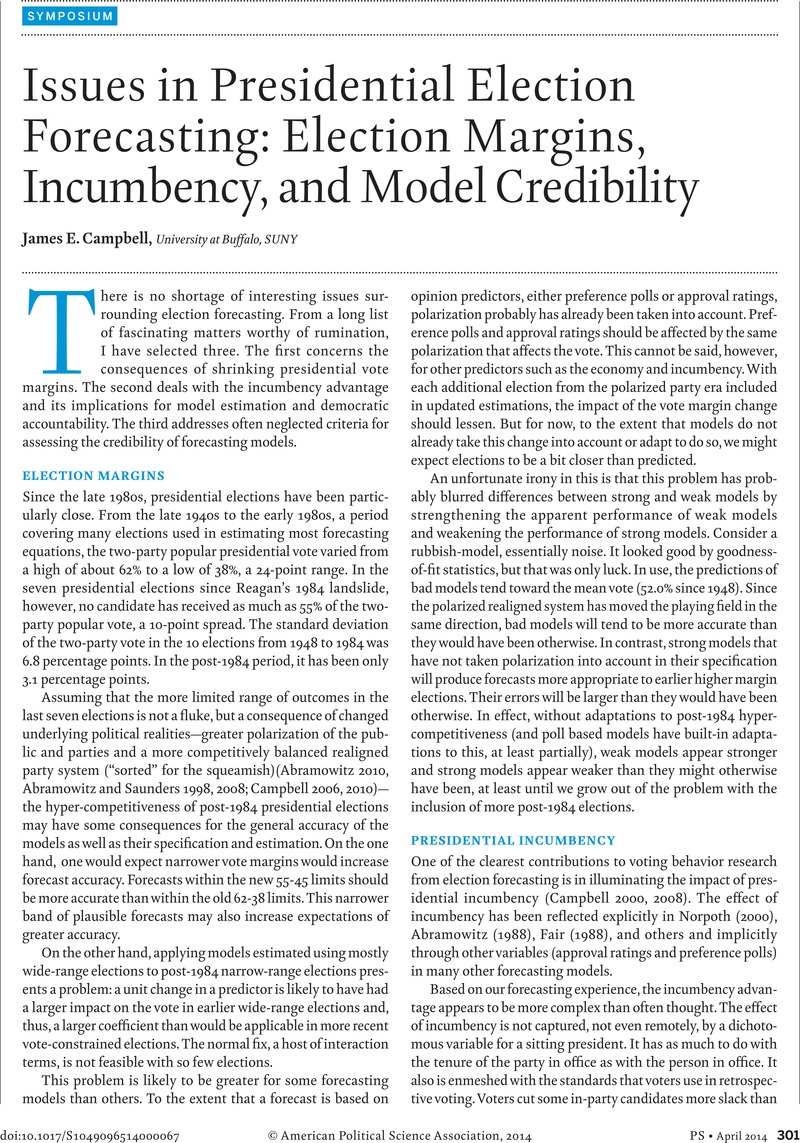Crossref Citations
This article has been cited by the following publications. This list is generated based on data provided by Crossref.
You, Quanzeng
Cao, Liangliang
Cong, Yang
Zhang, Xianchao
and
Luo, Jiebo
2015.
A Multifaceted Approach to Social Multimedia-Based Prediction of Elections.
IEEE Transactions on Multimedia,
Vol. 17,
Issue. 12,
p.
2271.
Kayser, Mark Andreas
and
Leininger, Arndt
2015.
Vintage errors: do real-time economic data improve election forecasts?.
Research & Politics,
Vol. 2,
Issue. 3,
Bergan, Daniel E.
Lacy, Stephen
Carnahan, Dustin
Stamm, Michael
and
Krier, Daniel H.
2021.
Reinforcement in the Aggregate: Partisan Newspaper Circulation and the Presidential Vote, 1900–1928.
Journalism Studies,
Vol. 22,
Issue. 14,
p.
1911.



